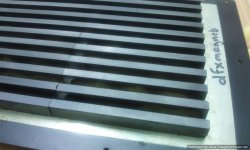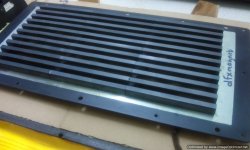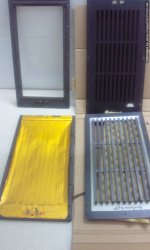In the interim, how about some pix of these magnets and the back side of the speaker where they can be seen??
I have already dismantled the speaker.
For those who are afraid to open such a speaker it's a piece of cake really.
I have made a special jig for opening it safely.
The trick for opening (and more importantly, closing!) is to not let the two
parts slide aside.
If it's kept straight with a jig, it's very easy.
I am on vacation at the moment (till the 25th).
I will post pictures of the magnets (close up) / construction/ foil/ damping foams when i return...
For those who are afraid to open such a speaker it's a piece of cake really.
I have made a special jig for opening it safely.
The trick for opening (and more importantly, closing!) is to not let the two
parts slide aside.
If it's kept straight with a jig, it's very easy.
I am on vacation at the moment (till the 25th).
I will post pictures of the magnets (close up) / construction/ foil/ damping foams when i return...
to my eye, in these images they look ferrite...
you could test a bit by seeing what the magnetic attraction is compared to a neodymium piece, or the repulsion (easier, since nothing gets slammed together).
you could test a bit by seeing what the magnetic attraction is compared to a neodymium piece, or the repulsion (easier, since nothing gets slammed together).
to my eye, in these images they look ferrite...
you could test a bit by seeing what the magnetic attraction is compared to a neodymium piece, or the repulsion (easier, since nothing gets slammed together).

Another means would be to measure a single one. Most smartphones have a 3 axis hall sensors into them and use an app like Androsensor to measure.
You mean that i can actually measure the intensity of the magnetic field with an android phone?
That would be a lifesaver!
That would be a lifesaver!
- Status
- Not open for further replies.
- Home
- Loudspeakers
- Planars & Exotics
- Magnet recognition


